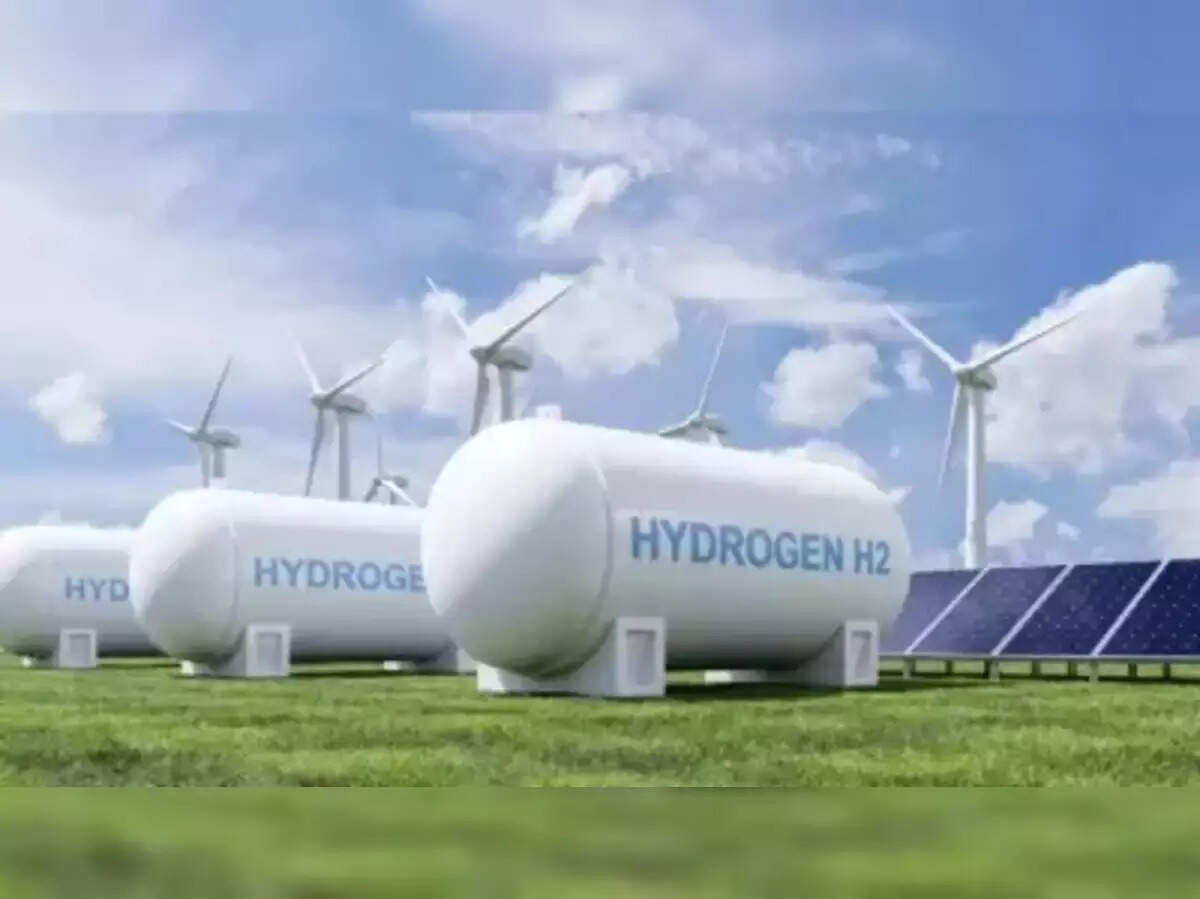
India is gearing up for its green transition with the intention of achieving net-zero emissions by 2070. Several alternative solutions are being explored and assessed to accelerate this transformation. Among the many potential areas identified, to reduce our reliance on imported Hydrogen is to produce it domestically using carbon-emitting methane.
According to a study by the Council for Energy, Environment and Water (CEEW), India consumes close to 5.6 million tonnes of hydrogen, most of it produced using methane. In addition to that, 1.9 million tonnes of hydrogen come from abroad, embedded in methanol, ammonia, and fertilisers. This all adds up to the current consumption reaching 7.5 million tonnes annually.
Therefore, under the visionary guidance of the Prime Minister of India, Narendra Modi, the National Hydrogen Mission was initiated by the Union Cabinet in January 2022 to meet 7.5 million tonnes of its annual requirement from locally produced green hydrogen and make India a leading producer and supplier in this sector worldwide. Further, with its adoption, it is estimated that India can abate 3.6 gigatonnes of CO2 emissions cumulatively between now and 2050. This can be a significant lever for the nation to contribute towards its announced climate targets and net-zero vision.
Under the green hydrogen mission, India aims to enhance its production capacity to at least five million tons (Million Metric Tons) per annum by 2030, with an associated renewable energy capacity addition of about 125 GW. Several private companies, international institutions, and bodies have come forward to serve as catalysts to support the commitment to the green hydrogen mission. Recently, investments to the tune of USD 1 billion were made by the EU Bank and Brookfield Renewables in multiple Indian companies to fund the development of green hydrogen technology.
Even the recent G20 declaration by the member states focussed on building a sustainable and equitable global hydrogen ecosystem that benefits all nations. While highlighting the implementation of Clean, Sustainable, Just, Affordable and Inclusive Energy Transitions, G20 members put a strong emphasis on developing global markets to promote Hydrogen produced from zero or low-emission technologies as the key driver of sustainable energy transformation. Thus, green hydrogen is no longer limited to discussions and deliberations but is being pursued rapidly for its effective adoption.
Green hydrogen has gained momentum as a potential alternative to fossil fuels. Its development, however, has been marred by several challenges:
1. High cost of production: As of now, Green Hydrogen’s per unit cost of production is costlier than fossil fuels. In a 2020 study by the CEEW, [1] Green Hydrogen accounted for less than 1 percent of global hydrogen production because of high production costs. While the cost of producing black hydrogen is between USD 0.9-1.5 per kilogram, grey hydrogen is USD 1.7-2.3 per kilogram, and blue hydrogen ranges between USD 1.3-3.6 per kilogram, the cost of green hydrogen, ranges between USD 3.50 to USD 5.00 per kilogram.
2. Land requirement and water resource availability: As per the estimates of the Ministry of Petroleum and Natural Gas, to produce 5 million tonnes of green hydrogen annually, it would require about 90 GW of electrolyser capacity, which in turn would need 130 GW of ground-mounted solar capacity. [2] Thus, around 210 to 370 km square of land (i.e., half of the size of Chennai city) is required to install the above capacity of solar to produce green hydrogen. Further, the EY India-SED Fund report estimates that 50 billion litres of demineralized water supply is required to achieve the target of producing five million tonnes of green hydrogen by 2030. [3] With climate change bringing adverse impacts worldwide and India facing a severe water crisis due to multiple droughts coupled with a depleting water table in many parts of the country, finding freshwater resources of 50 billion litres (equivalent to half of the annual water consumption in Chennai city) for the production of green hydrogen will be challenging.
3. Developing transmission network: Most of the time, the electrolysis plant for green hydrogen and the renewable energy plant to supply energy for electrolysis are not located in the same place. Thus, renewable energy has to be supplied from its site of generation to the electrolysis plant. This requires a massive build-out of transmission infrastructure to supply renewable energy for green hydrogen production.
Despite the challenges, there are viable solutions to produce green hydrogen cost-effectively. One promising solution is to explore the repurposing of reclaimed and closed coal and lignite mine lands as green hydrogen-producing facilities.
Such locations are ideal for developing green hydrogen facilities for the following reasons:
– Availability of contagious land to develop utility-scale solar and wind energy projects;
– Ready availability of abundant freshwater (due to mining activities) that can be used for electrolysis, and
– Existing transmission and evacuation infrastructure to supply renewable energy for electrolysis processes.
According to the Ministry of Coal, a vast amount of land will soon be available in India as a result of the phasing out of coal. [4] These land parcels along with the existing resources and infrastructure facilities can be used for the cost-effective production of green hydrogen. Even if 10 percent of these mined land parcels can be utilized for green hydrogen facilities, they have the potential to produce over one million metric tonnes of green hydrogen annually.
Evidently, the potential benefits of repurposing reclaimed and closed coal and lignite mines as green hydrogen production facilities are quite significant. Such repurposing could not only provide a cost-effective solution by overcoming challenges of land requirement, freshwater availability, and transmission infrastructure. Additionally, it could also provide economic benefits by creating new job opportunities and revitalizing coal-dependent local communities. Recently, Australia-based Fortescue Future Industries announced that it will repurpose a 670-MW retired coal mine in the US state of Washington into a green hydrogen facility. [5] India, too, should move in this direction by exploring opportunities to repurpose such reclaimed mined lands for developing green hydrogen facilities.
Conducting such exploratory studies and incentivizing private developers to choose mined areas could further accelerate the production of green hydrogen on repurposed mine- lands. India’s present green hydrogen policy does offer incentives for the establishment of such facilities such as single-window clearance for faster project approvals, fast allotment of land, priority access to the inter-state transmission network, and a 30-day energy banking policy. However, the current incentives are aimed at the supply side of the green hydrogen ecosystem. A visible channel showing who buys green hydrogen produced on mined lands is essential for developers and investors. For instance, the government could introduce a green hydrogen consumption obligation, similar to the Renewable Purchase Obligations in fertilizer production and petroleum refining. A strong offtake agreement will ensure such projects’ financial viability.
Despite the above-mentioned opportunities, there are also other significant challenges to repurposing reclaimed and closed coal mines as green hydrogen facilities. One has to consider whether green hydrogen facilities will have any adverse environmental impact as these mines are usually located in ecologically sensitive areas. At present, the freshwater extracted from mining activities is mostly diverted to agricultural use by local communities, drinking water supply for nearby cities, fisheries, and eco-tourism activities. Thus, one needs to consider the impact of using this water for green hydrogen production. Additionally, the feasibility of repurposing mines as green hydrogen facilities depends on factors such as solar and wind energy resource potential in the location, and contagious space of suitable and stable land to deploy solar and wind and electrolysis facilities.
Despite these challenges, the potential of repurposing reclaimed, and closed coal mines as green hydrogen facilities is a promising one. With the right planning and management, it could provide a viable solution for the cost-effective production of green hydrogen. It could also provide economic benefits by creating new job opportunities and revitalizing local communities.
In conclusion, repurposing reclaimed, and closed coal and lignite mines as green hydrogen production facilities has both potential benefits and challenges. It is essential that careful planning and management are undertaken to ensure that adverse impacts are minimized, and the economic benefits are maximized. If these challenges can be overcome, repurposing reclaimed and closed mines for green hydrogen production could provide a significant contribution to the future green energy transition and reduce greenhouse gas emissions.

